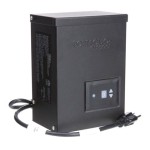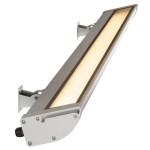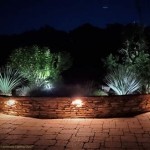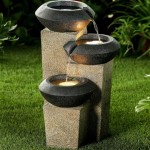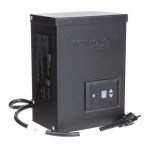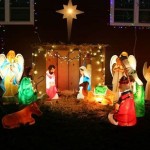Brass Vs. Aluminum: A Comprehensive Guide to Outdoor Lighting Materials
Selecting the appropriate material for outdoor lighting fixtures is a crucial decision that impacts both the aesthetic appeal and longevity of the installation. Two of the most popular choices are brass and aluminum, each possessing unique characteristics that make them suitable for different environments and design preferences. This article presents a detailed comparison of brass and aluminum outdoor lighting, outlining their key properties, advantages, and disadvantages, to assist in making an informed decision.
Outdoor lighting fixtures are exposed to a variety of harsh elements, including rain, snow, sunlight, and temperature fluctuations. Therefore, choosing a durable and weather-resistant material is essential to ensure the lights perform optimally and maintain their appearance for years to come. Both brass and aluminum offer excellent durability, but they differ significantly in terms of corrosion resistance, weight, and cost.
Corrosion Resistance: A Key Factor in Longevity
Corrosion resistance is perhaps the most critical factor to consider when selecting outdoor lighting materials. Exposure to moisture and salt can lead to the deterioration of metals, compromising their structural integrity and aesthetic appeal. Brass and aluminum exhibit different types of corrosion resistance, each with its own advantages.
Brass, an alloy of copper and zinc, demonstrates excellent resistance to corrosion, particularly in humid environments. Its inherent properties allow it to form a protective layer of patina over time. This patina, a greenish or brownish film, acts as a barrier against further corrosion, effectively preserving the underlying metal. The development of patina, while aesthetically pleasing to some, can be a point of contention for those seeking a pristine and consistent finish. The type of brass used also affects its corrosion resistance; higher copper content generally indicates better resistance.
Aluminum, on the other hand, relies on a different mechanism for corrosion resistance. It naturally forms a thin layer of aluminum oxide on its surface upon exposure to air. This oxide layer is incredibly hard and adheres tightly to the metal, preventing further oxidation and corrosion. Unlike brass patina, the aluminum oxide layer is typically colorless and does not significantly alter the appearance of the fixture. However, aluminum is more susceptible to galvanic corrosion when in contact with dissimilar metals, particularly in the presence of an electrolyte like saltwater. This necessitates careful consideration during installation to avoid direct contact with metals such as steel without proper insulation.
In coastal environments with high salt concentrations, both materials benefit from protective coatings. Powder coating, for example, provides an additional layer of protection against corrosion and UV degradation for both brass and aluminum. Regular cleaning is also essential to remove salt deposits and prevent the buildup of corrosive elements.
Weight and Installation Considerations
The weight of outdoor lighting fixtures can significantly impact the ease of installation and the structural support required. Aluminum is significantly lighter than brass, making it easier to handle and install, especially in elevated locations. This weight difference can translate to reduced labor costs and the ability to use less robust mounting hardware.
Brass, being a denser metal, offers a feeling of substantiality and quality. However, its weight can pose challenges during installation, particularly for larger fixtures. It may require additional support structures or specialized mounting techniques to ensure secure and safe installation. The added weight can also increase shipping costs, potentially impacting the overall budget for larger projects.
The weight difference also affects the types of installations suitable for each material. For example, aluminum fixtures may be preferred for mounting on lightweight structures, such as wooden fences or decks, where excessive weight could pose a structural risk. Brass fixtures, with their added weight, may be more appropriate for installations on sturdy walls or posts.
Consideration must also be given to the potential movement caused by wind. Heavier brass fixtures may be more resistant to swaying in high winds, but proper installation is paramount for both materials to prevent damage to the fixture or surrounding structures. Wind load calculations are essential when planning any outdoor lighting installation.
Aesthetic Appeal and Finish Options
The aesthetic appeal of outdoor lighting fixtures is a subjective but important consideration. Both brass and aluminum are available in a variety of finishes, allowing for customization to match different architectural styles and design preferences.
Brass, with its warm, golden tones, lends itself well to traditional and classic designs. The natural patina that develops over time adds character and a sense of history to the fixtures. Polished brass offers a bright, reflective surface, while antique brass finishes provide a more subdued and weathered look. The ability to achieve intricate detailing and castings makes brass ideal for ornate and decorative lighting designs.
Aluminum, while not possessing the same inherent warmth as brass, offers a clean and modern aesthetic. Its smooth surface is well-suited for powder coating, a process that allows for a wide range of colors and textures. Powder coating also provides excellent UV resistance, preventing fading and discoloration over time. Aluminum fixtures are often chosen for contemporary and minimalist designs, where clean lines and understated elegance are desired.
The choice between brass and aluminum also depends on the desired level of maintenance. Brass fixtures with a natural patina require minimal maintenance, while polished brass requires regular polishing to maintain its shine. Aluminum fixtures, especially those with powder-coated finishes, are generally low-maintenance and require only occasional cleaning.
Ultimately, the aesthetic choice depends on individual preferences and the overall design of the outdoor space. Considering the surrounding architecture, landscaping, and existing fixtures is crucial in selecting a material that complements the overall aesthetic.
In addition to the raw material, the finish applied has a large impact on the appearance and durability of the fixture. Powder coating, anodizing, and wet painting are common surface treatments for both aluminum and brass. Each imparts unique properties and can significantly affect the fixture's resistance to corrosion, UV degradation, and scratching.
The longevity and appearance of outdoor lighting are also greatly influenced by the type of bulb used. LEDs, known for their energy efficiency and long lifespan, are increasingly popular for outdoor applications. They produce less heat compared to traditional incandescent bulbs, reducing the risk of damage to the fixture and surrounding materials.
Proper wiring and grounding are also essential for safe and reliable outdoor lighting. Using weatherproof connectors and conduits protects the electrical components from moisture and prevents electrical hazards. Regular inspection of wiring and connections is recommended to ensure optimal performance and safety.
The cost of outdoor lighting fixtures can vary significantly depending on the material, size, design, and finish. Brass fixtures typically command a higher price point than aluminum fixtures due to the higher cost of raw materials and the more complex manufacturing processes involved. The increased weight of brass can also contribute to higher shipping costs.
While aluminum fixtures may be less expensive upfront, it is important to consider the long-term cost of ownership. The durability and corrosion resistance of the chosen material will influence the lifespan of the fixture and the frequency of replacements or repairs. Investing in high-quality materials and finishes can ultimately save money in the long run by reducing maintenance costs and extending the lifespan of the lighting installation.
The choice between brass and aluminum outdoor lighting involves a careful evaluation of factors such as corrosion resistance, weight, aesthetic appeal, and cost. By understanding the unique properties of each material, it is possible to make an informed decision that meets the specific needs and preferences of the project.

Gardencoin Speaker Solid Brass Outdoor Landscape Spotlights 12v Heavy Duty Low Voltage Spot Light Waterproof For Garden And Yard Up Lighting Broe

Gardencoin Goblet Solid Brass Outdoor Landscape Spotlights 12v Heavy Duty Low Voltage Led Lights Waterproof For Garden Uplighting Broe

Gardenreet Brass Pathway Lights Low Voltage Led Landscape Path 12v Outdoor Waterproof Lighting Hat For Walkway Driveway Garden

Patriot Solid Brass Spotlight C2c Lights

Top Notch Outdoor Pathway Lights Premium Landscaping Lighting For Paths Driveways Grounds And Landscapes Waterproof Weatherproof Wired Cast Aluminum Led Area Black Landscape

Gardenreet Brass Landscape Lighting Black Outdoor 12v Low Voltage Lights Broe Uplights Waterproof For Garden Yard House Wall Without Mr16

Retro European Led Outdoor Antique Wall Lights Waterproof Aluminum Profile For Garden Villa Hotel Decorative Cylindrical Landscape Lamp From Lvlingfang 1882024 536 19 Dhgate Com

Kichler Camillo 1 Light Textured Black And Brass Aluminum Hardwired Waterproof Outdoor Post With Integrated Led Pack 59142bkt The Home Depot

Kichler Camillo 1 Light Textured Black And Brass Aluminum Hardwired Waterproof Outdoor Post With Integrated Led Pack 59142bkt The Home Depot

Gardencoin Solid Brass Low Voltage Pathway Lights 6 7 Shade 21 9 Tall 12v Ac Dc
Related Posts
